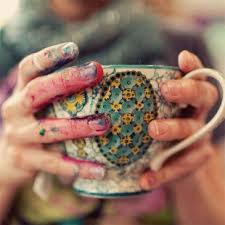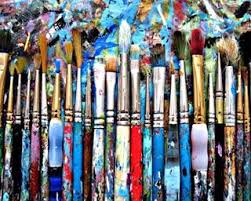 Have you ever dreamed about becoming a professional artist who makes a living creating art full-time? If so, you are not alone; thousands of artists all over the world desire the exact same thing. If you’ve ever seriously considered becoming a full-time artist and voiced your desire, you have probably heard some negative comments from others (and thought them yourself). Have you ever heard or thought the follow statements?
Have you ever dreamed about becoming a professional artist who makes a living creating art full-time? If so, you are not alone; thousands of artists all over the world desire the exact same thing. If you’ve ever seriously considered becoming a full-time artist and voiced your desire, you have probably heard some negative comments from others (and thought them yourself). Have you ever heard or thought the follow statements?
“You are too old to start a new career.”
“There is no financial stability in the field of art.”
“You are not talented enough to create art professionally.”
“You don’t have enough education to be an artist.”
“You are not a risk taker.”
These types of declarations are dream killers. Furthermore, they are often false. If your deepest desire is to become a professional artist, today is the day to consider taking steps in that direction.
How Badly Do You Want to Create Art Professionally?
Before you can make the decision to become a professional artist, you first have to gauge your desire to create art. How badly do you want to create art full-time? If you fall asleep and wake up thinking about art, you should probably pursue a career in the art field. If creating art consumes your mind, that’s a good sign you’re a professional artist-to-be.
Without a doubt, the first step in becoming a full-time artist is to simply make a decision to do so. In order to make such a decision, ask yourself the following question: “If I do not attempt to become a professional artist, will I sincerely regret it?” If your answer is yes, taking steps toward creating art for a living is probably the best choice you can make.
How to Overcome Your Fears
 Once you decide to become a professional artist, expect oppositional thoughts that breed fear to flood your mind. The way you can fight fear is by becoming educated and challenging your negative beliefs.
Once you decide to become a professional artist, expect oppositional thoughts that breed fear to flood your mind. The way you can fight fear is by becoming educated and challenging your negative beliefs.
One of the biggest concerns of adults considering pursuing art is their age; they believe that because they are not in their 20s they are disqualified from becoming professional artists. If this is your concern, consider that before Paul Gauguin became a painter he was a stockbroker for over 10 years. He was probably terrified to leave his established career and attempt to create art for a living as grown man. However, he didn’t let the fact that he was starting an art career late in the game keep him from starting at all. Imagine what the world would have been deprived of had he not had trusted himself enough to step into the unknown for passion’s sake.
Essential Reading for the Aspiring Artist
If you’re serious about becoming a professional artist, there are two books that will likely be very helpful to you. One is Letters to a Young Poet by Rainer Maria Rilke. The other is The Artist’s Way by Julia Cameron. These books will infuse you with hope and give you the tools you need to challenge your limiting beliefs. It may also be a wise move to meet with a counselor or life coach who can help you make a career plan and take realistic steps toward your dream.
If you are still deliberating about whether or not you should take the journey of becoming a full-time artist, know that even if you fail at your endeavor, at least you will have tried and will have no regrets. Remember, risk is always met with reward.
Read more Segmation blog posts about art and color:
Inspirational Tips to Boost your Artistic Creativity
More Marketing Tips for Artists
Graphic Designer Creates a Different TYPE of Art
Be an Artist in 2 minutes with Segmation SegPlay® PC (see more details here)
Join us on FacebookSegPlay® Mobile iTunes now available for iPhone and iPad

















